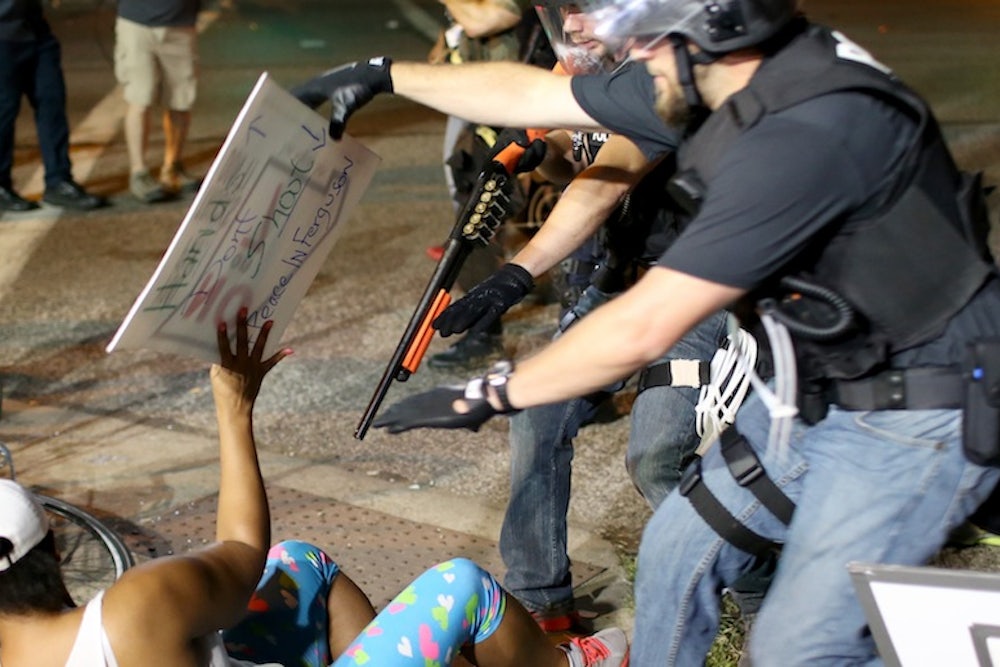The Department of Justice is about to launch an investigation of the police departments in Ferguson and in St. Louis County, to see if there is a pattern of excessive force and civil rights abuses. This investigation may not get the same attention as the Justice Department’s ongoing probe into whether Ferguson police violated the rights of one individual—Michael Brown, whose killing at the hands of an officer last month set off the unrest. But the inquiry into department-wide behavior may ultimately be a bigger deal. In fact, it could be the most meaningful action anyone has taken in the month since Brown’s death, because it could trigger a closely monitored overhaul of the Ferguson police force that would change its practices for years to come.
If the Justice Department discovers a pattern of abuses, it could theoretically bring a case in court. That’s unlikely to happen, however, because it would mean a long, drawn-court battle. Even if the Justice Department wanted that, Ferguson probably wouldn’t, given that it’s already facing $40 million in lawsuits for “wanton and excessive force” against protesters.
That’s why both sides would likely seek a different outcome: They’d look to enter into a consent decree. Created by the Violent Crime Control and Law Enforcement Act of 1994, a consent decree is basically a legal agreement in which a police department agrees to change its ways. A court approves the agreement and appoints some kind of independent monitor for the duration of the decree, which generally lasts a minimum of five years. While the details of past consent decrees have differed, according to Slate’s Josh Voorhees, they tend to have a few things in common. Most put in place new procedures for reporting and investigating uses of force, as well as for training officers in how to use force in the future. Typically, consent decrees also introduce new, more transparent procedures through which the public can complain about abusive behavior.
Dozens of other cities have entered into these agreements and, sometimes, the process is difficult. Federal monitors overseeing past decrees have met extreme resistance in cities like New Orleans and Seattle. But the decrees can also make a big difference. One of the most famous examples is Los Angeles, which entered into a consent decree following repeated reports of police brutality in the 1990s. The LAPD still has many problems, by most accounts; just a few weeks ago, cops killed an unarmed man. But observers say it is a better police force than it was two decades ago. Considering that 13 percent of Ferguson’s cops have faced excessive force complaints—for allegations of unbelievable violence, including pistol-whipping children and hog-tying a 12-year-old—the city would seem to need the same kind of improvement.
Ferguson is one of at least 34 departments in the country facing a civil rights review right now. If even a fraction of those need remedial action, it’s a sad commentary on the state of policing. But if the investigations end up reforming the systems, it could also mean someone else avoids Michael Brown’s fate.
—Rebecca Leber
